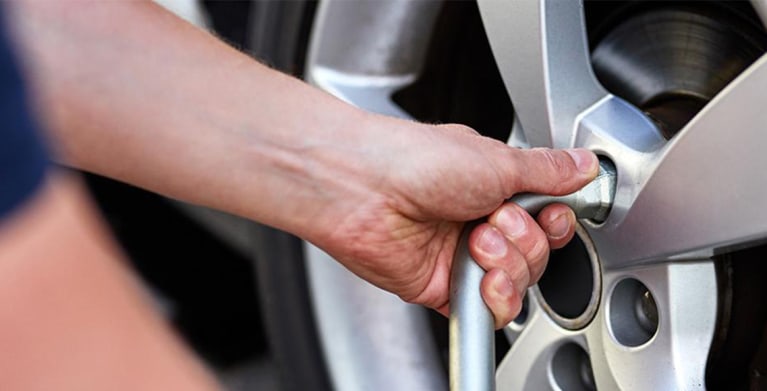Tire Solution: The Influence of Climate Condition
When it comes to guaranteeing optimum efficiency and safety and security on the roadway, recognizing the influence of weather condition problems on tire service is important. GMC Tire Service. In this discussion, we will certainly check out the complex partnership between weather condition problems and tire service, losing light on the significance of weather-specific tire maintenance methods and factors to consider.
Warm and Tire Efficiency
When subjected to high temperature levels, tires experience modifications in efficiency that can significantly influence vehicle safety and security and handling. The warmth generated from long term driving or heat problems creates the tire rubber to soften, leading to lowered step life and increased wear. As the rubber becomes softer, the tire's grasp when driving diminishes, influencing braking distances and total traction. In extreme instances, too much heat can even create tire blowouts, presenting a severe safety threat to the lorry and its residents.

Winter Effects
Cold climate conditions can have a substantial influence on tire efficiency and safety. As temperatures drop, tire rubber can solidify, leading to lowered traction on icy or snow-covered roadways. In chilly climate, tires might additionally shed atmospheric pressure more rapidly, which can impact taking care of and fuel effectiveness. Additionally, cool temperature levels can create tire sidewalls to tense, boosting the risk of damages from craters or various other road hazards.
To alleviate the impacts of chilly weather on tires, it is critical to routinely check tire pressure and inflate them to the manufacturer's recommended degrees. Utilizing wintertime or all-season tires developed for winter problems can additionally boost grip and hold on icy or snowy roads. Proper tire maintenance, including regular inspections for wear and damages, ends up being even a lot more critical throughout chillier months to ensure optimal performance and safety.
Rainy Issues Effect
Tires with worn-out treads are more prone to hydroplaning, where a layer of water builds up in between the road and the tire surface area, leading to loss of traction. To battle this, chauffeurs should frequently examine their tires for ample tread deepness and think about investing in tires specifically created for wet problems.
Additionally, stormy climate can also reduce exposure, making it testing for motorists to see the roadway in advance clearly (GMC Tire Service). In such problems, it is vital to change driving speeds appropriately and preserve a safe adhering to range to allow for sudden quits. Correctly filled with air tires can also aid in keeping control on damp roads by giving better handling and hold
Snow and Tire Security
When driving in snowy problems, having the right tires can make a considerable distinction in safety and efficiency. Winter months tires are designed with special Go Here rubber substances and tread patterns to provide better traction on snow and ice compared to all-season tires.

It is crucial to comply with manufacturer directions when using and mounting tire chains to protect against damages to the tires and automobile. By selecting the appropriate tires, keeping appropriate inflation, and taking into consideration extra traction aids like tire chains, vehicle drivers can enhance their security when navigating snow-covered roadways.
Weather-Related Tire Maintenance
Weather-related tire upkeep incorporates an array of techniques intended at guaranteeing ideal tire function and long life in different weather condition scenarios. One vital aspect of weather-related tire maintenance is tire pressure guideline. Checking tire walk regularly and changing tires when tread wear reaches a specific deepness is vital for maintaining grip and stability in damaging climate.
Final Thought
In verdict, weather condition problems have a considerable influence on tire efficiency and safety and security. From heat impacting tire pressure and put on to cool weather condition decreasing grip, it is essential to think about the weather when preserving and utilizing tires.
In this discussion, we will check out the elaborate relationship in between weather problems and tire service, dropping light on the significance of weather-specific tire upkeep methods and considerations.
